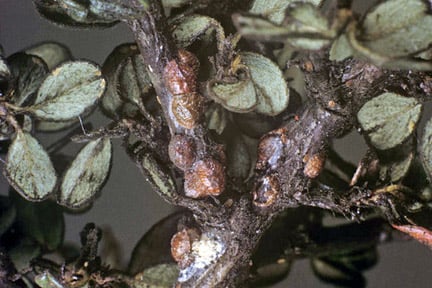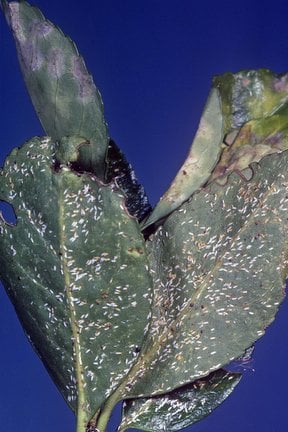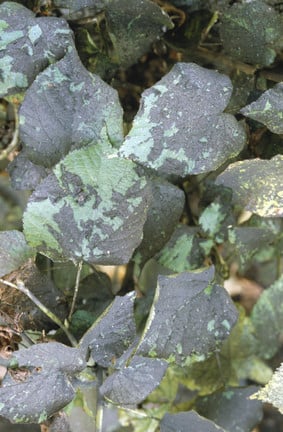
Quick facts
Common name - Brown scale
Scientific name - Parthenolecanium corni
Plants affected - Many woody plants, including Ceanothus, Cotoneaster, Cytisus, Weigela, Wisteria, roses, plums and bush and cane fruits. In glasshouses grape vines, peaches and nectarines may be affected
Main symptoms - Brown, oval convex shell-like objects on the branches
Most active - All year
What is brown scale?
Scale insects are feeding true bugs belonging to several families in the Hemiptera. Typically the adults are immobile having a flattened or raised appearance, with no visible legs. They often look like a ‘scale’ on a leaf or stem, many species produce a white wax often covering egg masses. There are more than 100 species found in Britain, 26 of which have been introduced. More than 25 species can be found in gardens or on houseplants.
Brown scale lives primarily on stems and is found on a wide range of woody plants.
Symptoms
- Convex, oval, dark brown 'shells', 3-6 mm long (1/8 in to 1/4 in), occur on woody stems
- Heavily affected plants may lack vigour and a black sooty mould can develop on the sugary honeydew that is excreted by the insects as they feed on

Management
- Where possible tolerate populations of scale insects. Well-tended healthy plants are able to tolerate light populations of these insects and so they do not necessarily require management
- Encourage predators in the garden, some ladybirds, parasitoid wasps and some birds will eat scale insects
- Adult scales and egg masses can be removed when seen but this may not reduce large populations
Biology
- These -sucking insects are protected by their shells, beneath which the mature females lay eggs in early summer
- The eggs hatch in late June-July and the young scales crawl around, but soon settle down to suck sap from the undersides of the leaves
- In late summer they move to the , where they overwinter as reddish-brown nymphs about 1 mm in length
- They complete their development in the following spring















